The final couple of weeks of the trout season can be a
frantic time. Fish begin to move with renewed vigour as the water temperature
drops, levels rise, food becomes more abundant and spawning approaches. These
changes bring with them the promise of good sport and, indeed, end of season
fishing can match late spring for excitement. When this happens the end can be
abrupt: just as things are hotting up after the languid months of summer, the
season ends as suddenly as it began, and the curtain comes down on another year’s
trout fishing. The opportunity to focus on a new quarry through the rest of
autumn and deep into winter is a welcome one.
I love grayling and grayling fishing, but they, and it, can
be frustrating as well as exiting. I’d say that grayling are far less
predictable than brown trout which tend, in the main, to station themselves in
fairly obvious lies. Furthermore, it is usually the case that the better fish
can be found in the better lies. So, once a certain degree of watercraft has
been attained, it is often relatively simple to locate the quarry. It is true
that grayling have predictable behaviour patterns, but they are far more likely
than trout to dispense with these altogether and adopt an entirely different
lifestyle, seemingly on a whim, and often en
masse.
The key to successful autumn and winter grayling fishing,
then, lies in the ability to locate fish. Grayling can be tricky for a variety of
reasons. Unlike trout, they rarely lie close to the surface unless they are
feeding in shallow water, which the better fish tend not to do. Even when they
are found in shallow, clear lies, they can be devilishly difficult to discern.
I have experienced enough times, when wading, the sudden flight of sizeable
grayling almost from beneath my feet to know this. Their beautiful, ambiguous, impossible
to describe colouring renders them almost invisible against a variety of
backgrounds. The grayling’s outline too, so recognisable when viewed side-on in
pictures, is altogether more cryptic when viewed from above through water. They are shape shifters. To make matters trickier still, as autumn morphs into
winter, grayling tend increasingly to shoal together, so that, in a given
stretch, most fish are concentrated into as few as two or three holding areas.
Clearly, under these circumstances, location becomes an absolute prerequisite.
In the rivers where I fish for them, grayling begin to
appear more and more as September draws to a close. Indeed, on the last day
this season, on the Coln, I caught four decent grayling in successive casts
from a tiny pool, no bigger than five yards by ten, while trying for a large
and very visible brown trout with an olive gold head nymph. Until I caught
them, I had no idea that any other fish were in the pool, let alone four of
them - each one more surprising than the last. The point is that
grayling often pop up unannounced in unexpected places, and are often not
noticed at all.
On some rivers I fish (The Teme comes to mind) grayling seem
to be present in abundant quantities throughout the entirety of the coarse and
game seasons. On others (e.g. the Coln) they are conspicuous by their absence
until late summer when they begin to emerge, from where I know not, in increasing
numbers.
A few weeks back I fished a stretch of the Coln that was new
to me. The club has rights for Grayling from autumn to spring, but the beat is
not available during the game season. It was an incredibly warm and sunny day
for the time of year and the river was clear and low – lower, apparently, than
normal summer levels. This being my initial visit I treated it as a
fact-finding mission, my primary aim being to glean information about the
river and the likeliest fish-holding spots. If I caught anything it would be a
bonus. There were a lot of trout visible, some very big ones among them but, of
course, they were off limits. So, moving gingerly up the bank, I cast to places
that my rudimentary watercraft told me were probably deeper than average, thinking this to be as good a plan as any, given the grayling's penchant for deep pools and holes. They are, after all, bottom feeders essentially. I began with a
heavily wired PTN and, when no interest was forthcoming, switched to a small (16)
gold head olive nymph. I was rewarded shortly thereafter when I hooked and landed a
half pound grayling from a deepish pool beneath one of the many small weirs
that characterise this beat. Something much bigger was moving in the pool,
however, and although I cast a few times at whatever was snaffling nymphs and causing
the surface disturbance I saw, it failed to answer my offer.
I decided to return to the car and replace the 10ft 4wt outfit
I’d been using with my trusty 8ft 4wt Streamflex. I can cast a far tighter loop
with it than the floppy ten footer and there were some tricky casts beneath the
far bank herbage that I had tried, and failed I felt, to exploit fully.
Back at the car I got chatting to a fellow brother of the
angle who gave me some useful advice and a fly to try. Discretion prevents me from
revealing the pattern (one which I had not seen before) but, suffice to say, it
was markedly more colourful than the nymphs in my box; red being particularly
prominent. With renewed confidence I sallied forth with the new fly hitched firmly to
my tippet and, sure enough, caught more than a few grayling. Annoyingly, and entirely by accident, I also caught a
clunking three and a half pound brown trout which would comfortably have romped into the winner's enclosure as fish of
the season, had it counted. Surely this was a magic fly...
The next evening I feverishly tied up a dozen nymphs to the same pattern. I had a day off in the coming week and intended to
revisit the Coln, this time forearmed with some knowledge of the beat and with the Magic Fly in my box. Conditions were perfect: still unseasonably warm but heavily overcast and almost windless.
The light was such that sighting the leader and its dipping point on the
surface was simplicity itself. I progressed upstream, fishing the Magic Fly, and once more I was rewarded with many lovely grayling, mostly half a pound apiece but an astonishingly
hard fighting pounder came to the net as well.
Regular readers of this blog will know me as a conservative type of chap when it comes to flies and fishing. The flies in my box, by and large, are traditional patterns in various shades of brown, grey, dun and black. The amber grayling nymph described in the last post was strictly a one off aberration designed for a very specific purpose and, in any case, was conceived and tied when I was drunk. Further evidence of my ambivalence towards the modern and colourful can be read about in the depressing account of a soulless, but educative, spiritually at least, afternoon hauling an orange fritz (for crying out loud...) through the white horses of a North Pennine reservoir in a gale. Yes, it has rightly and oft been said that, when it comes to flies, old Retiarius is a very much a traditionalist, and possibly a curmudgeon too.
But have I been too conservative I ask myself? My success with the Magic Fly has taught me that grayling really do favour a gaudier offering - on occasion. I might even argue, after a few drams and enough provocation, that highly coloured nymphs are an aid to provoking takes from grayling over those of trout - who knows?. It is, perhaps, enough to relate that, since the Magic Fly experience (is it too much to call it an epiphany?) I have tied up a few colourful patterns (not too colourful, mind) for grayling nymphs which I have given below, alongside a couple of more traditional ones. The glass bead patterns are fun to tie and, I have found, are particularly effective.
As ever, barbs are crushed or barbless patterns used. None of the patterns are as gaudy as the Magic Fly.
But have I been too conservative I ask myself? My success with the Magic Fly has taught me that grayling really do favour a gaudier offering - on occasion. I might even argue, after a few drams and enough provocation, that highly coloured nymphs are an aid to provoking takes from grayling over those of trout - who knows?. It is, perhaps, enough to relate that, since the Magic Fly experience (is it too much to call it an epiphany?) I have tied up a few colourful patterns (not too colourful, mind) for grayling nymphs which I have given below, alongside a couple of more traditional ones. The glass bead patterns are fun to tie and, I have found, are particularly effective.
As ever, barbs are crushed or barbless patterns used. None of the patterns are as gaudy as the Magic Fly.
Glass Bead Hare's Ear
Hook: Partridge Heavy Wet (14 - 18. These are size 14).
Head: Glass bead (they can be acquired in various sizes here.).
Underbody: Fine copper or gold wire, as required. I tend to weight mine with wire as glass beads are not as heavy as their brass, steel or tungsten equivalents.
Thread: Olive 0/8 (or anything handy).
Tail: Hare guard hairs.
Body: Hare's ear dubbed scruffily.
Rib: Use the excess from the wire underbody.
Rabbit and Pink Nymph
Hook: Partridge Heavy Wet or Kamasan B170 (14 - 18).
Head: Pink enamelled steel bead (Veniards).
Thread: Olive 0/8.
Tail: Rabbit guard hairs.
Body: Dubbed rabbit underfur with a few guard hairs mixed in.
Collar: Fluorescent pink SLF.
Rabbit and Orange Nymph
Hook: Kamasan B170 (14 - 18).
Head: Copper bead (You could use an orange enamelled bead).
Thread: Olive 0/8.
Tail: Rabbit guard hairs.
Body: Dubbed rabbit underfur with a few guard hairs mixed in.
Collar: Fluorescent orange SLF.
Pink Head Hare's Ear
Head: Copper bead (You could use an orange enamelled bead).
Thread: Olive 0/8.
Tail: Rabbit guard hairs.
Body: Dubbed rabbit underfur with a few guard hairs mixed in.
Collar: Fluorescent orange SLF.
Pink Head Hare's Ear
Hook: Kamasan B170 (14 - 18).
Head: Pink enamelled steel bead (Veniards).
Thread: Olive 0/8.
Rib: Gold wire.
Body: Scruffily dubbed hare's ear with guard hairs picked out.
Black Nymph
Hook: Kamasan B170 (14 - 18).
Head: Silver bead (it is silver - it's just a rubbish photograph).
Thread: Black.
Tail: Black hen hackle fibres.
Rib: Fine silver wire.
Body: Black SLF.
Hackle: Black hen, tied very sparse and swept back.
Sawyer's Killer Bug
Head: Silver bead (it is silver - it's just a rubbish photograph).
Thread: Black.
Tail: Black hen hackle fibres.
Rib: Fine silver wire.
Body: Black SLF.
Hackle: Black hen, tied very sparse and swept back.
Sawyer's Killer Bug
Hook: Kamasan B170 (14 - 16).
Thread/Underbody: Fine copper wire.
Body: Chadwick 477 wool (Veniard do a good version of this legendary yarn).
Sawyer's Grey Goose Nymph
Hook: Kamasan B170 (14 - 18).
Thread/Underbody: Fine copper wire.
Tail/body/wing case: Grey goose shoulder.
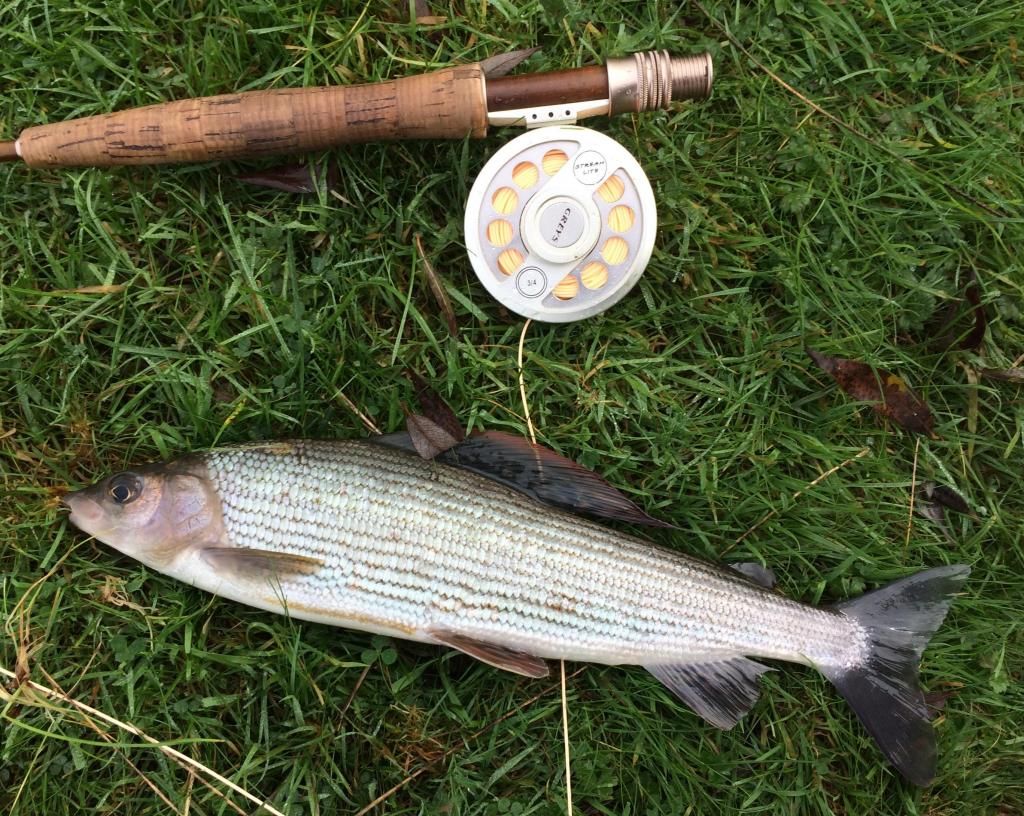

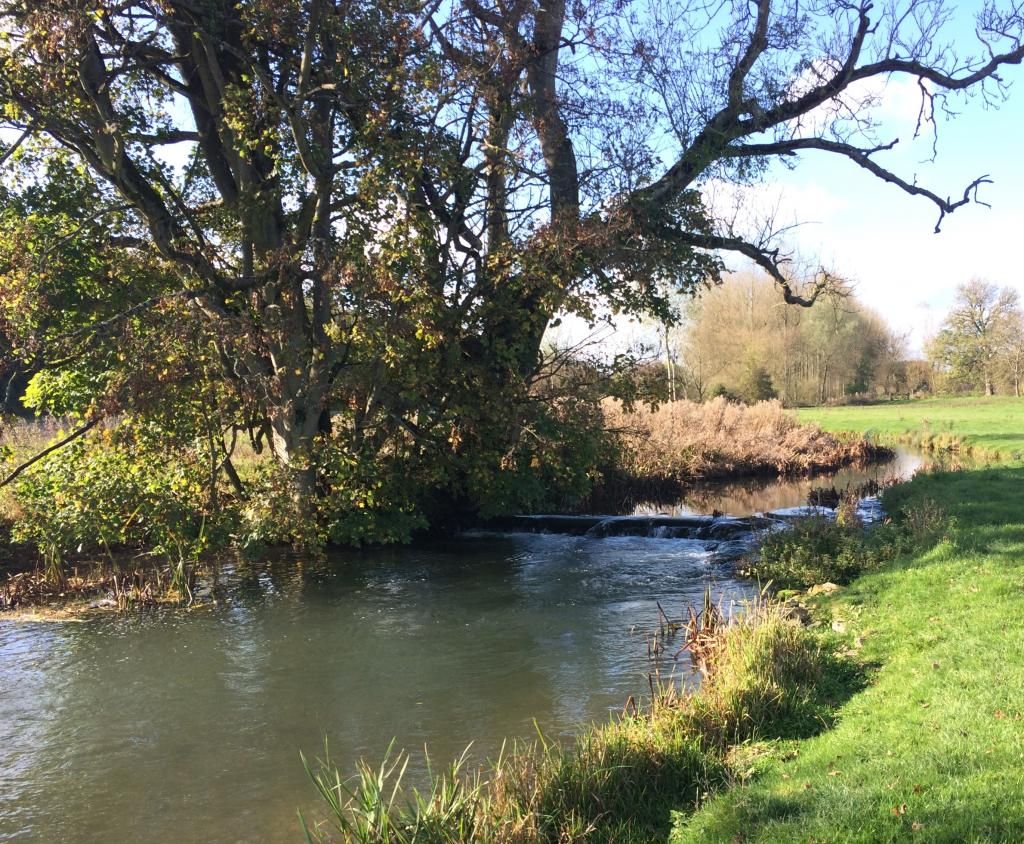

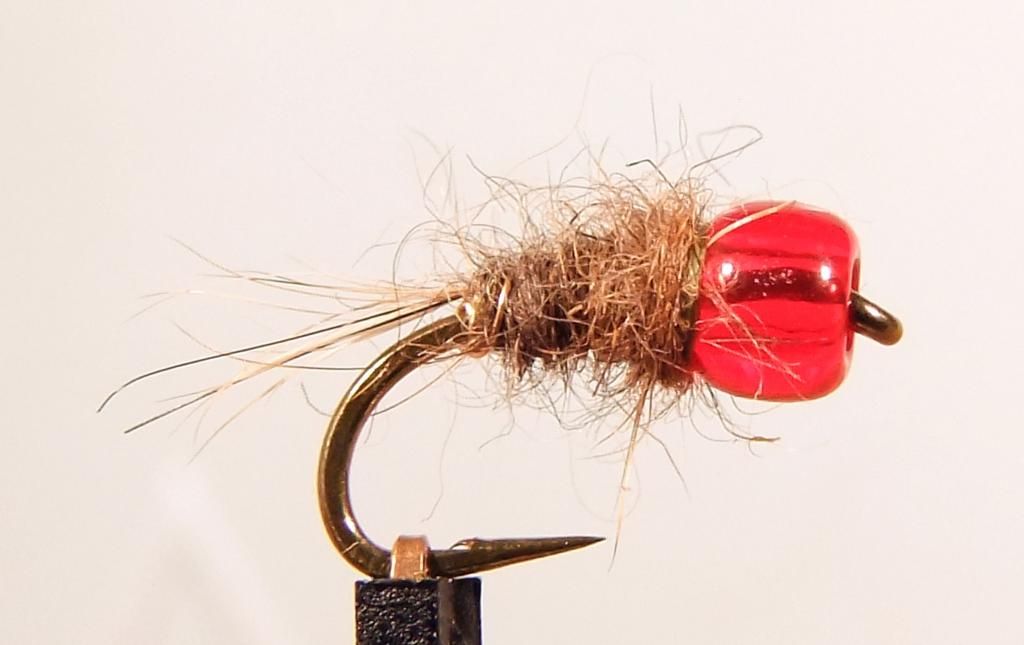


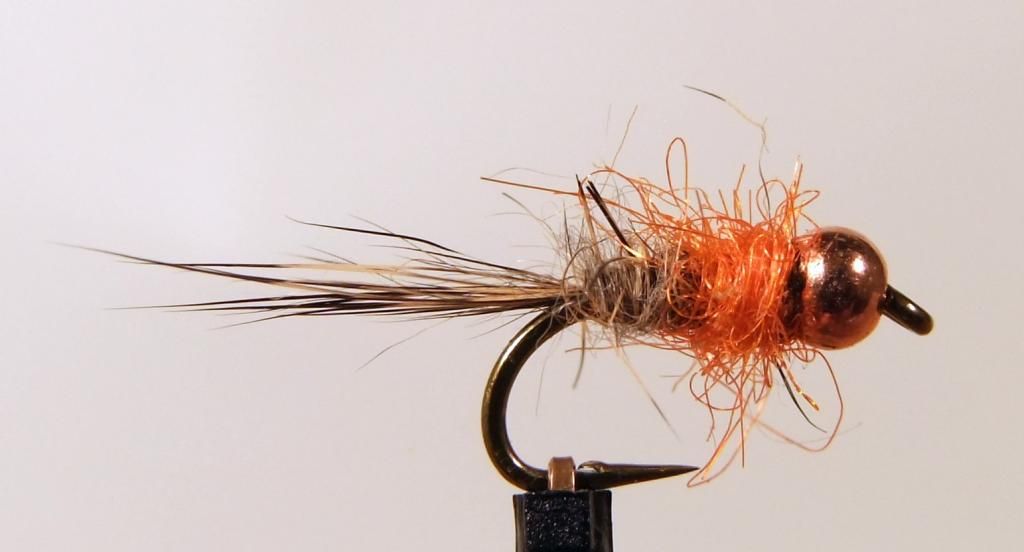
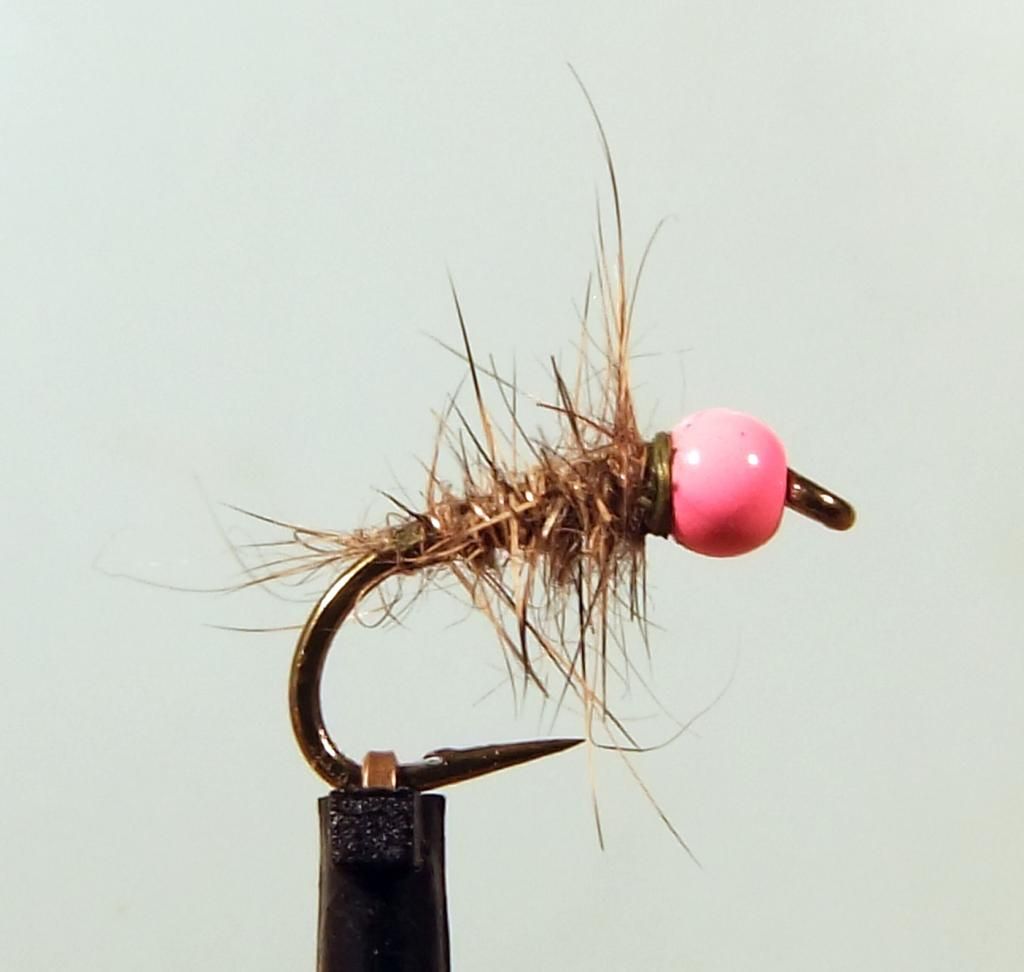

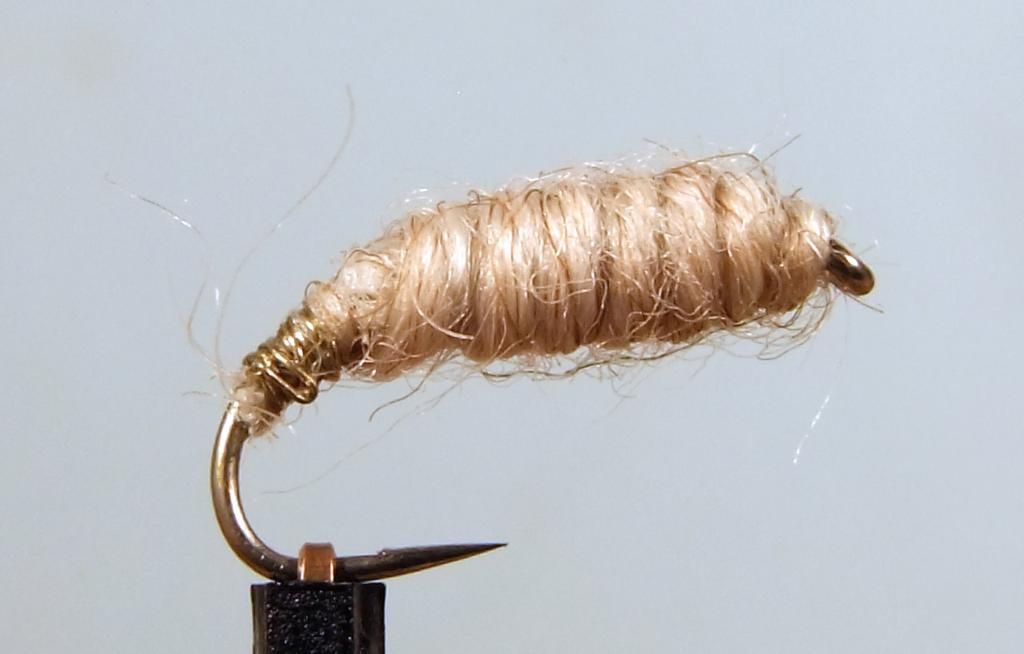
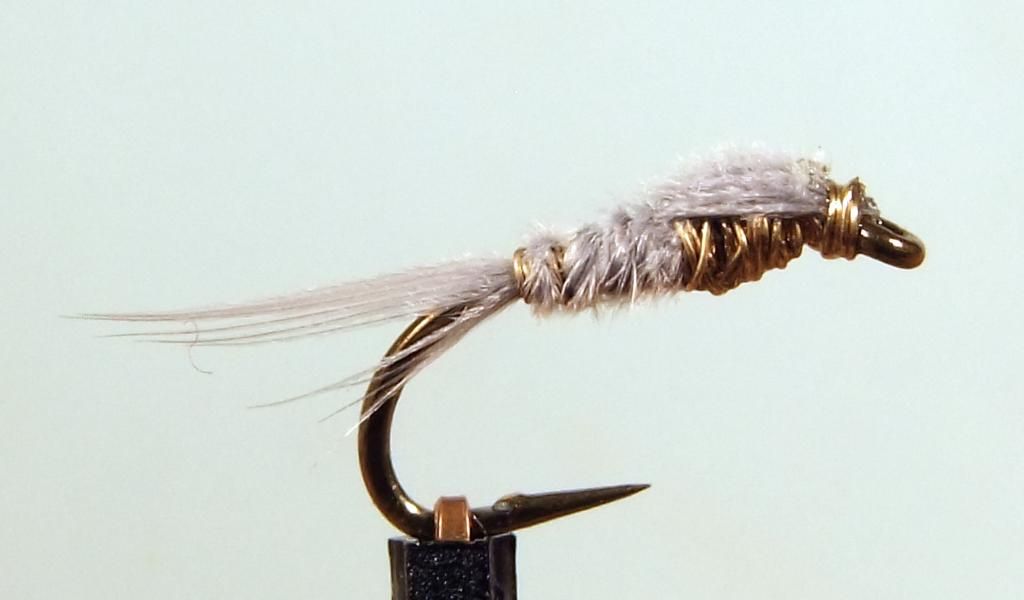
No comments:
Post a Comment